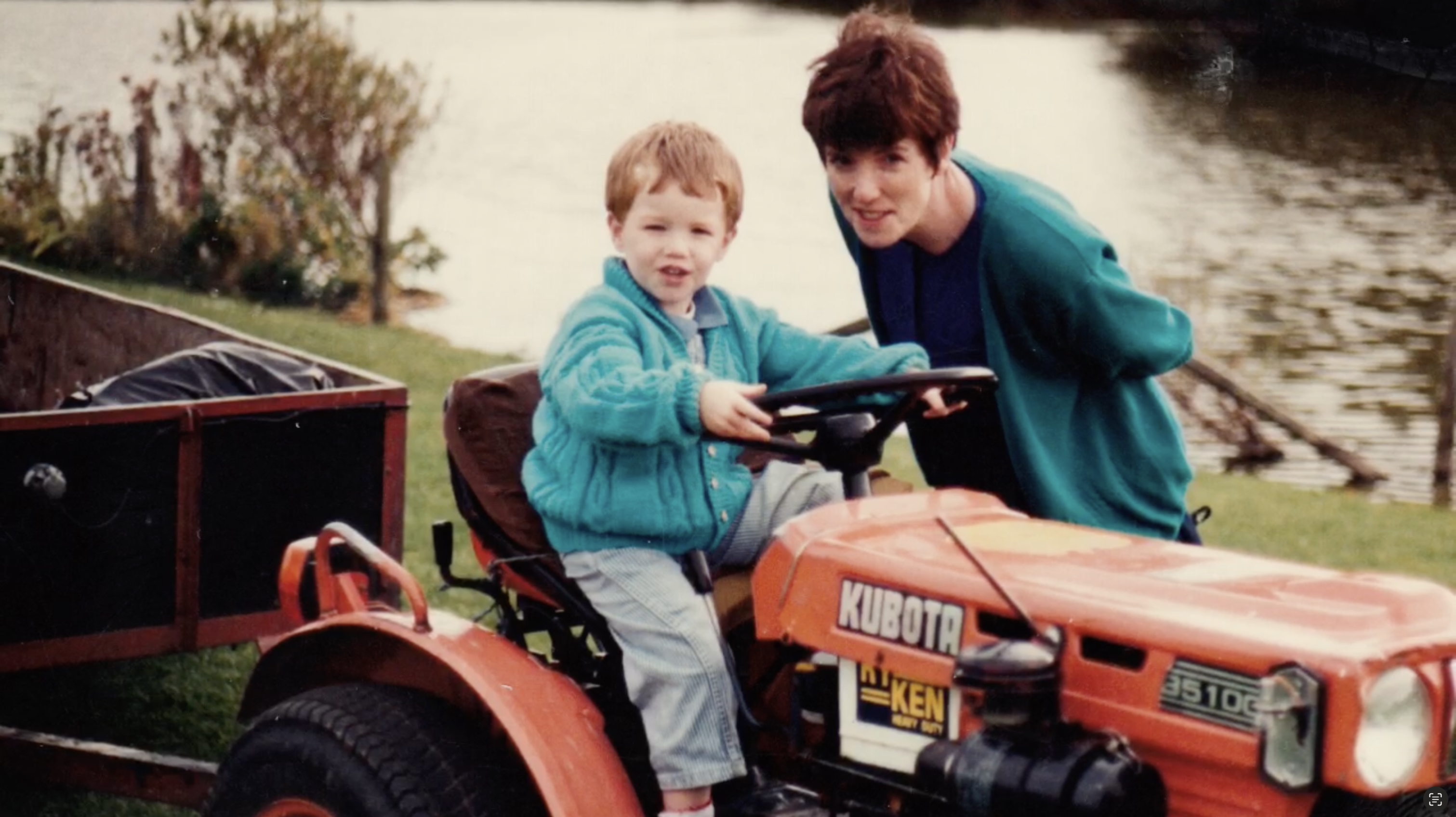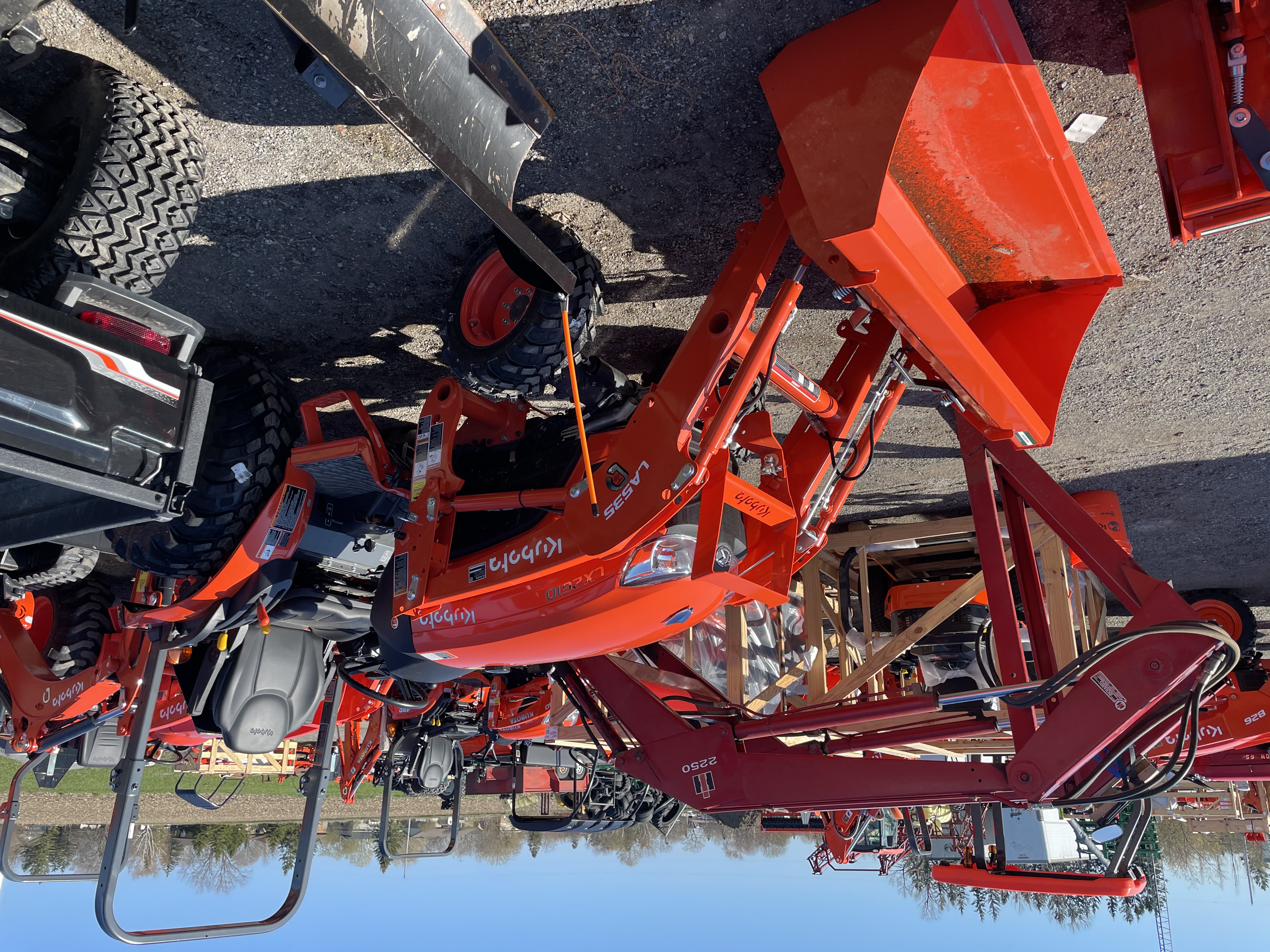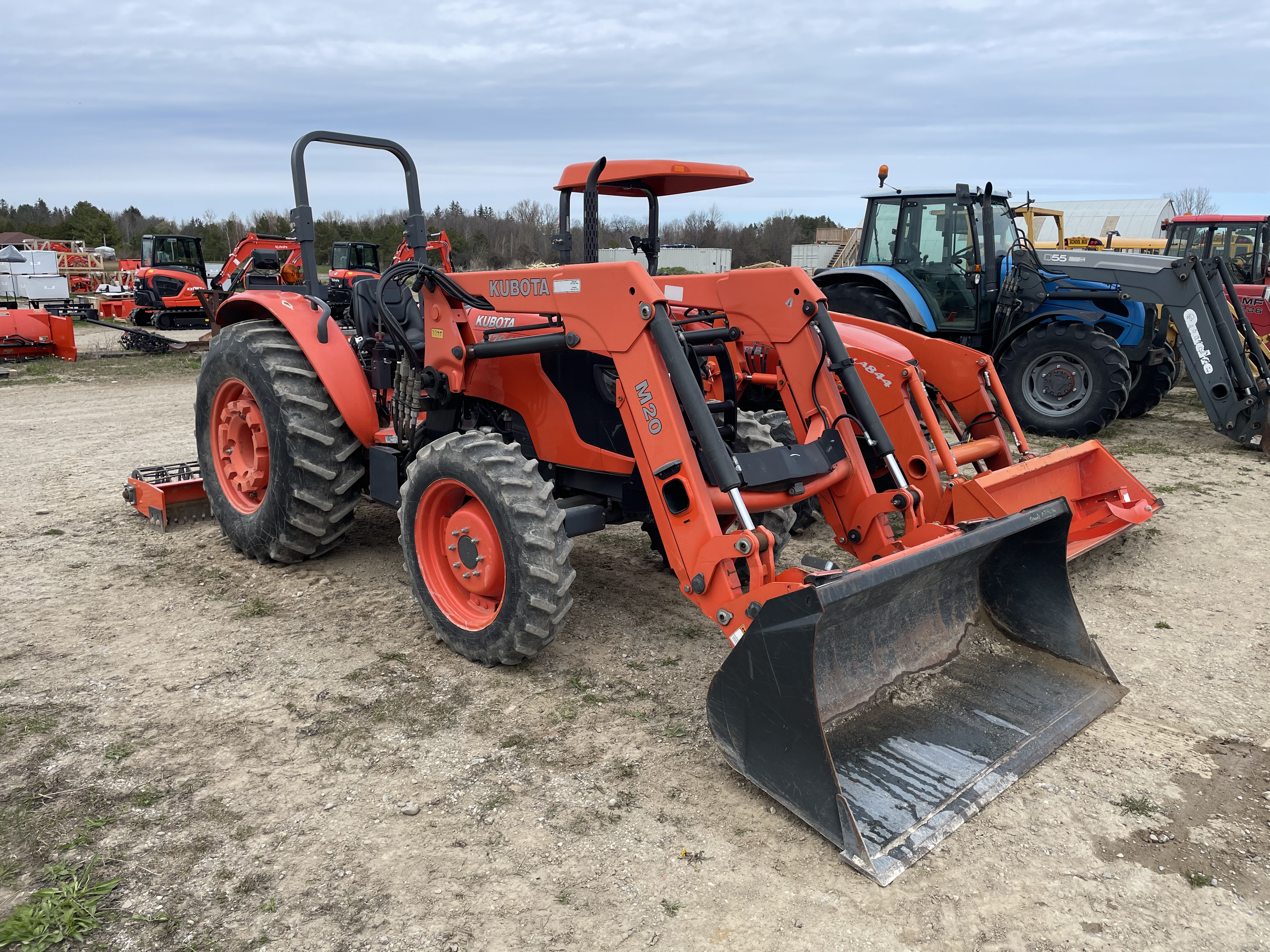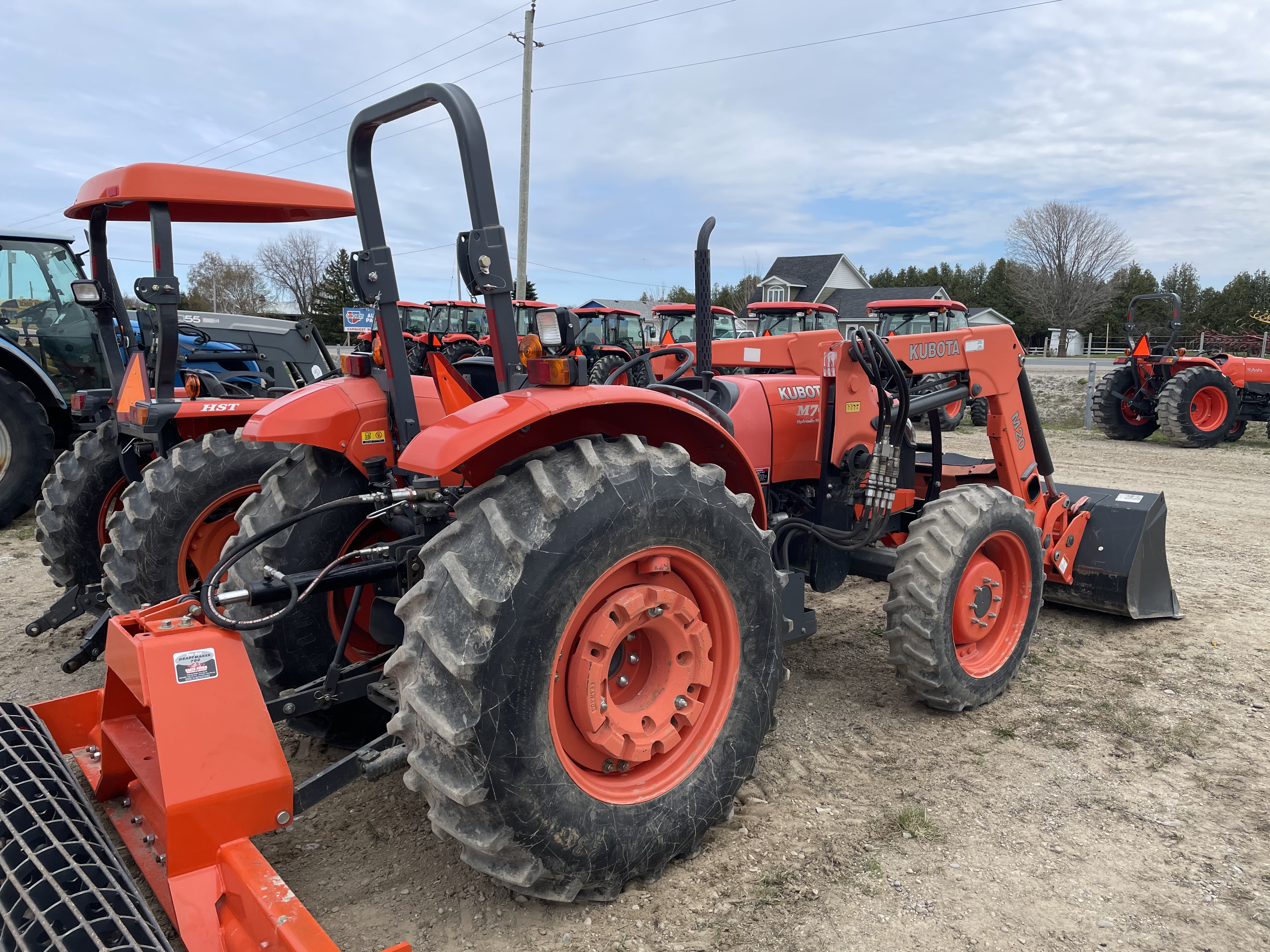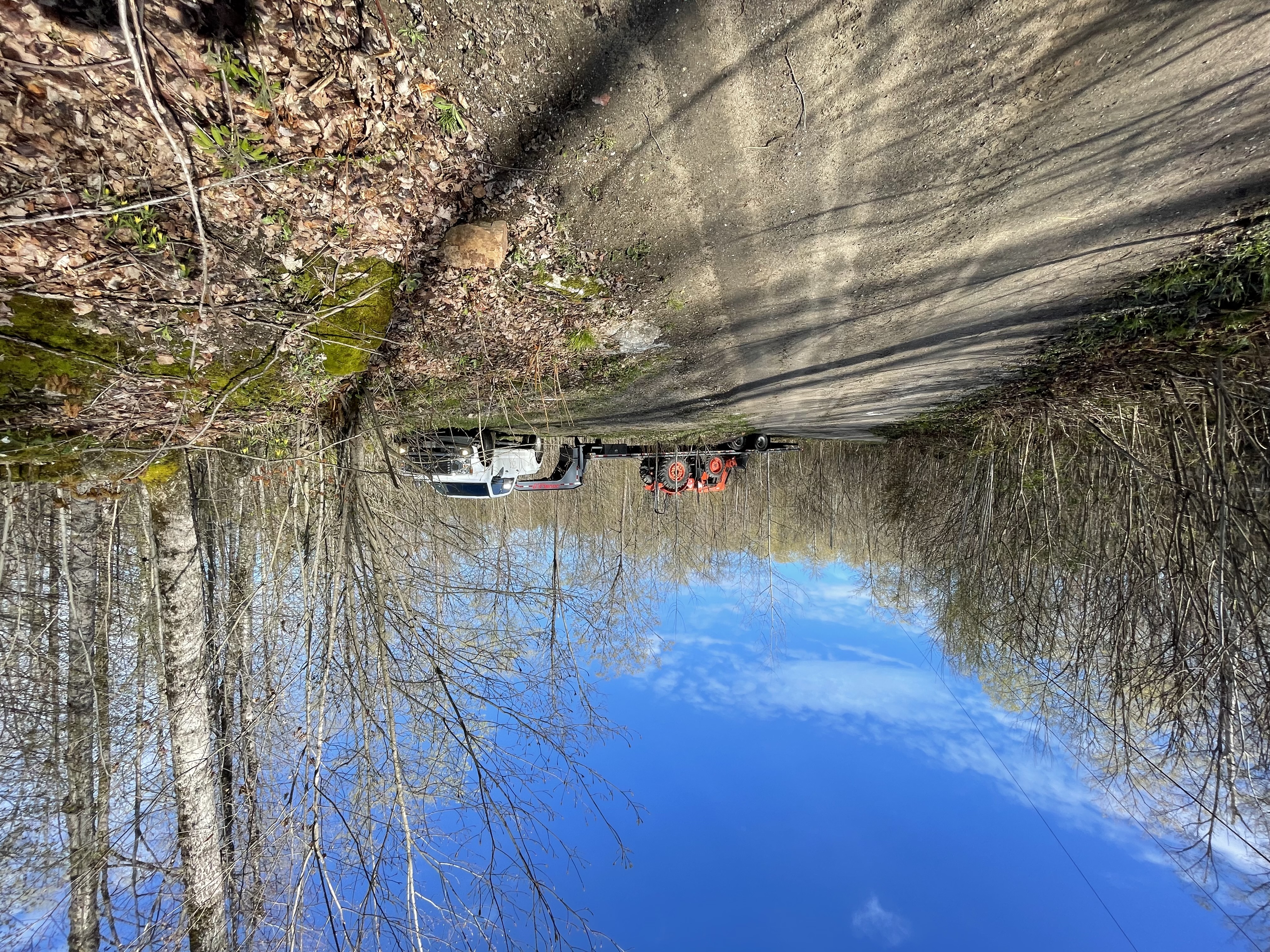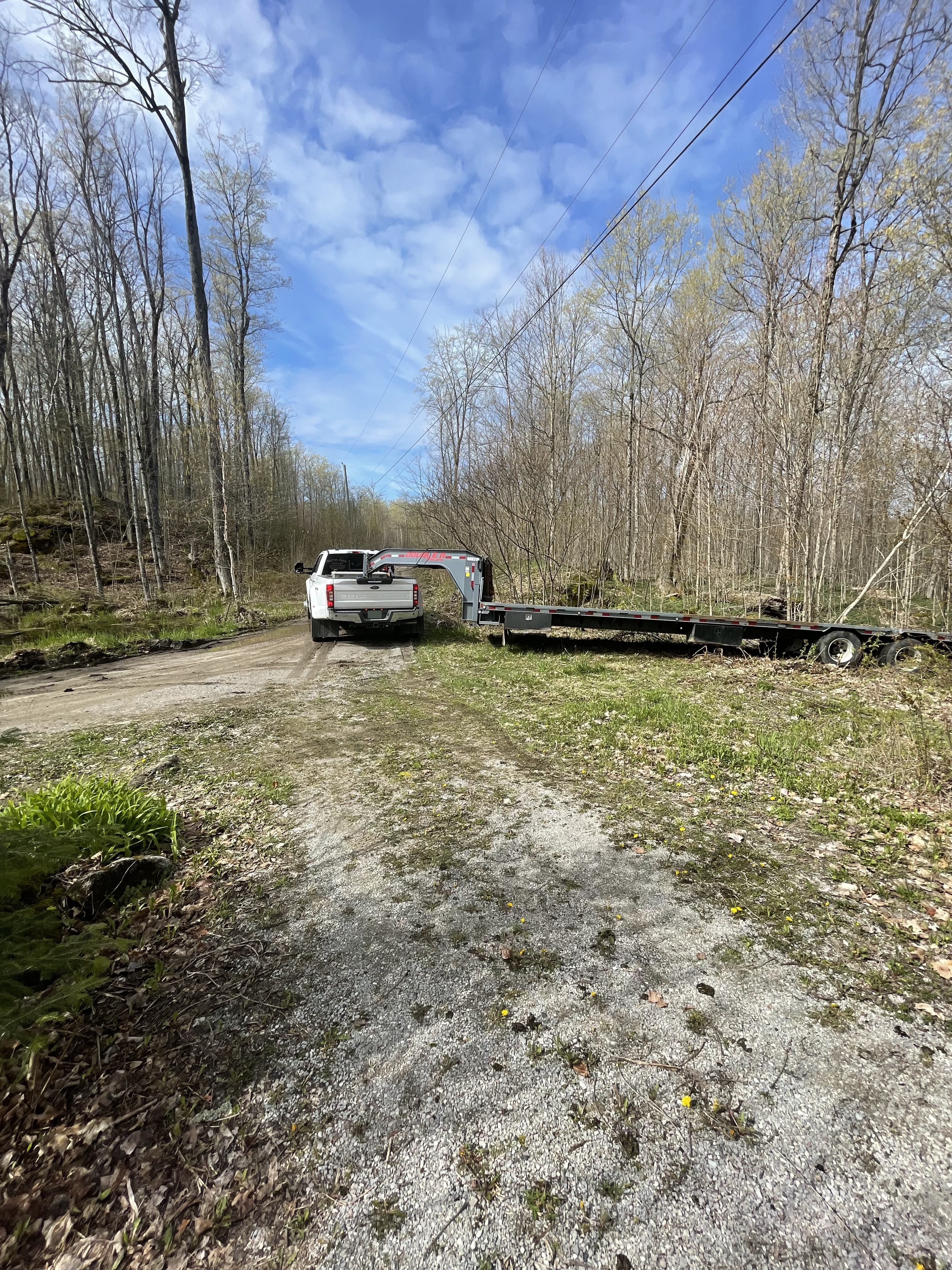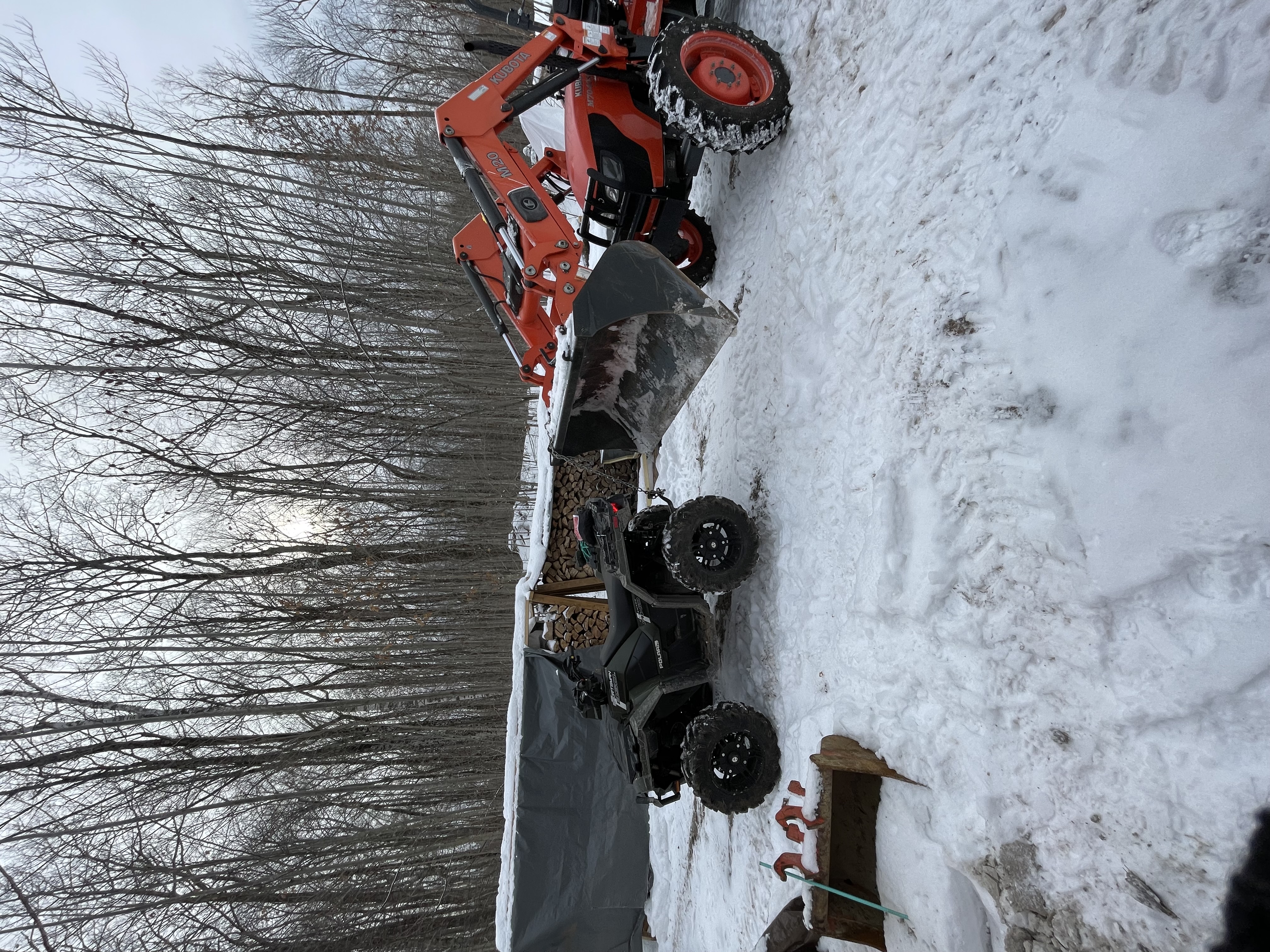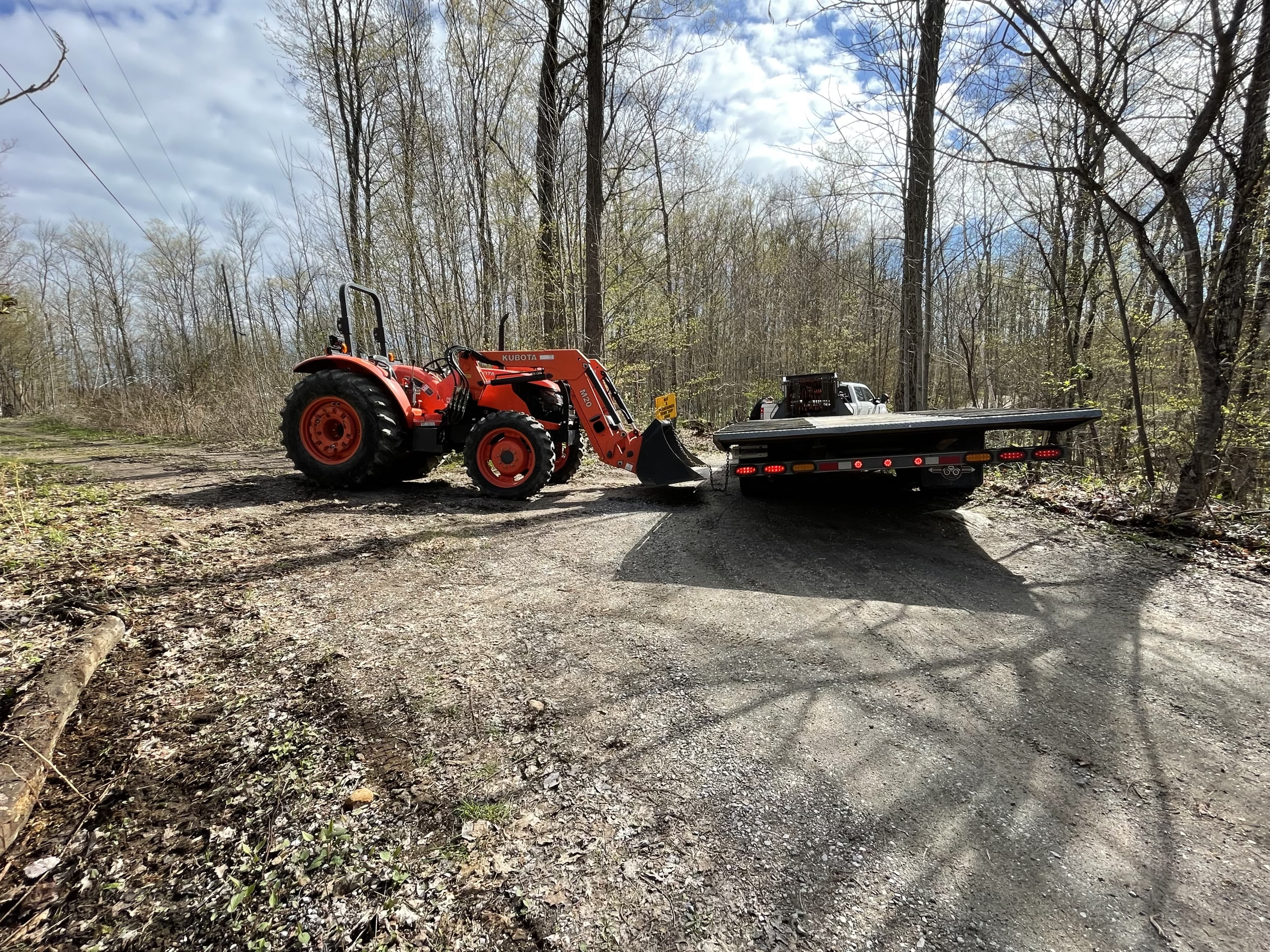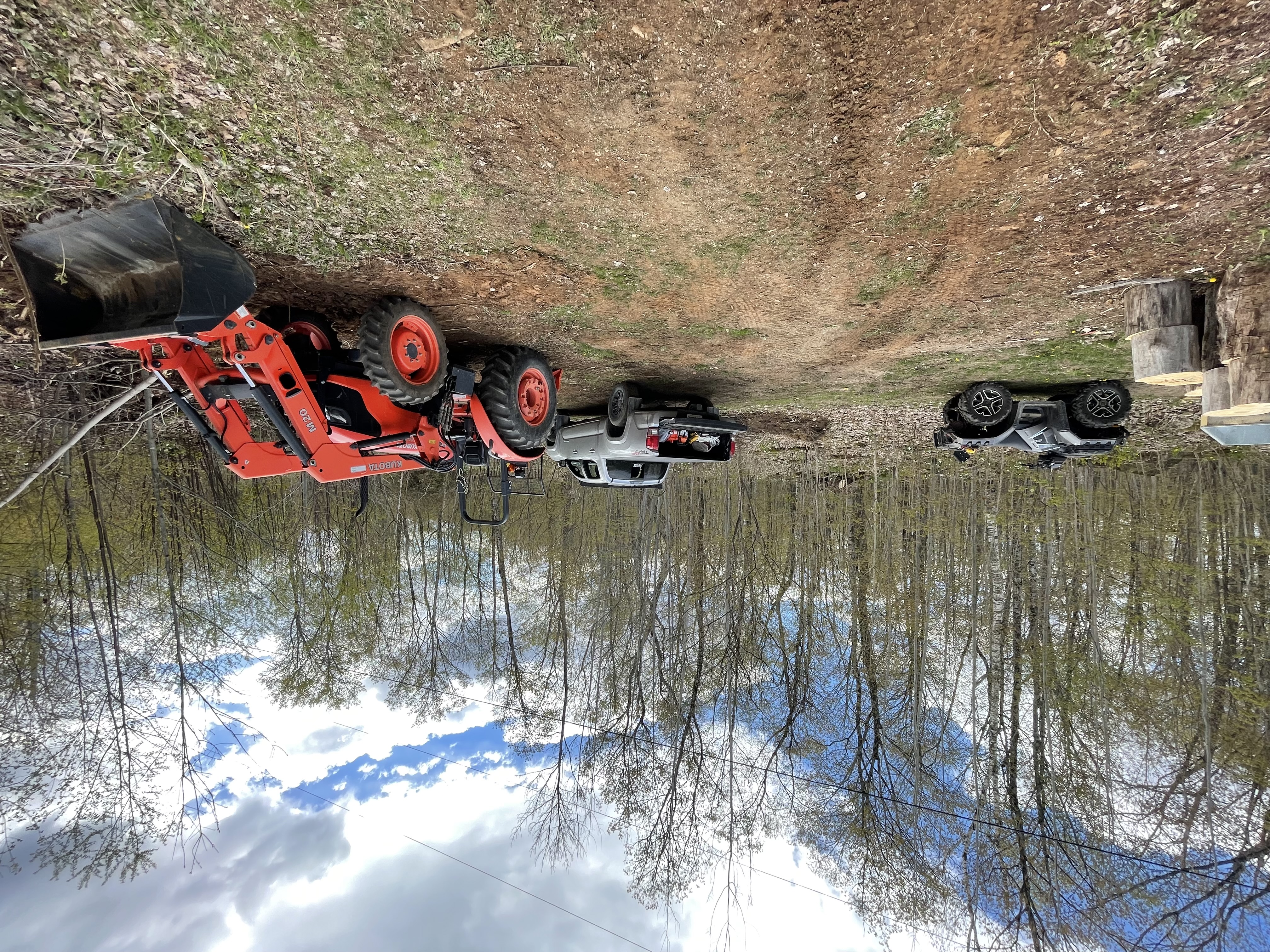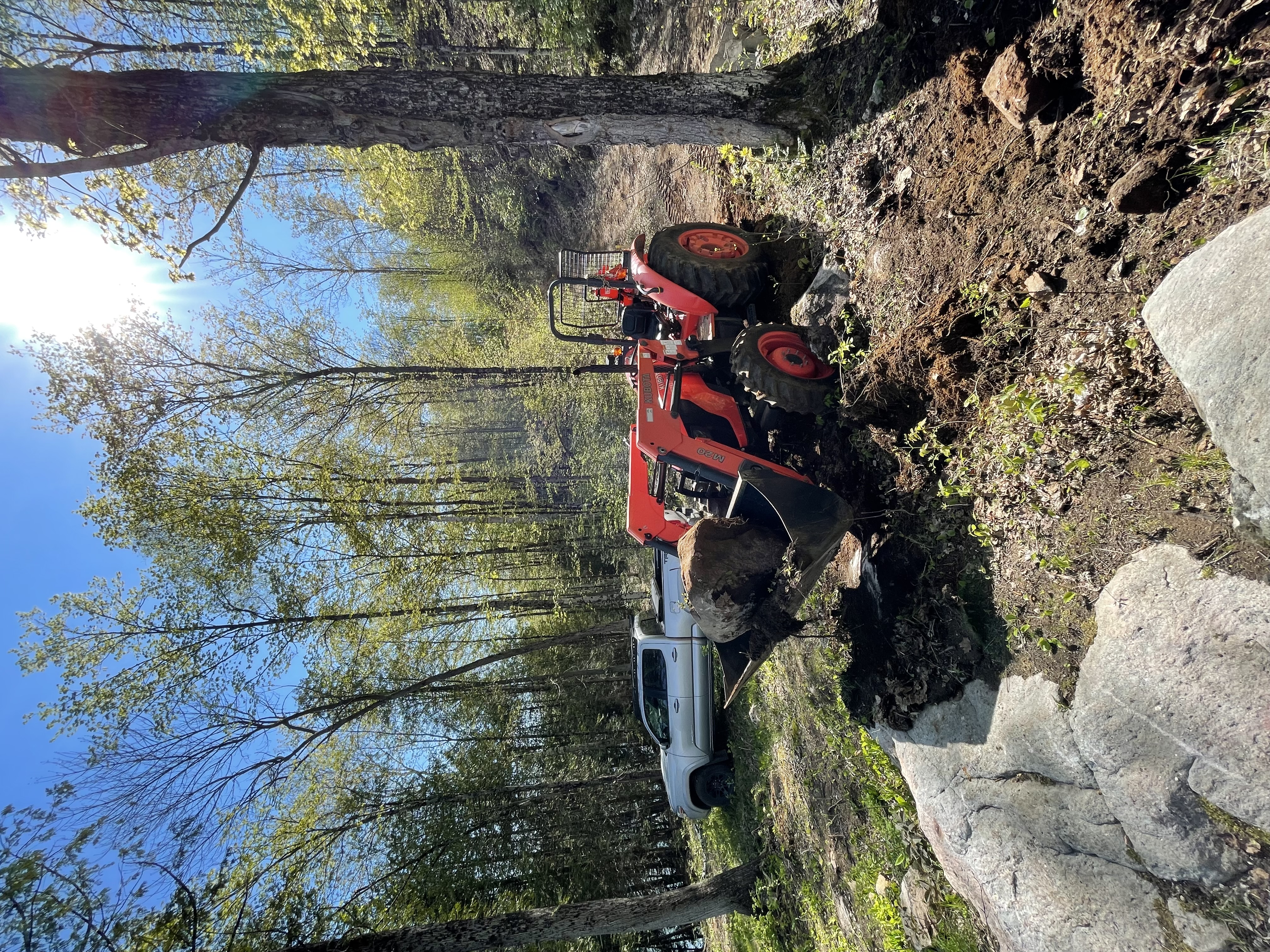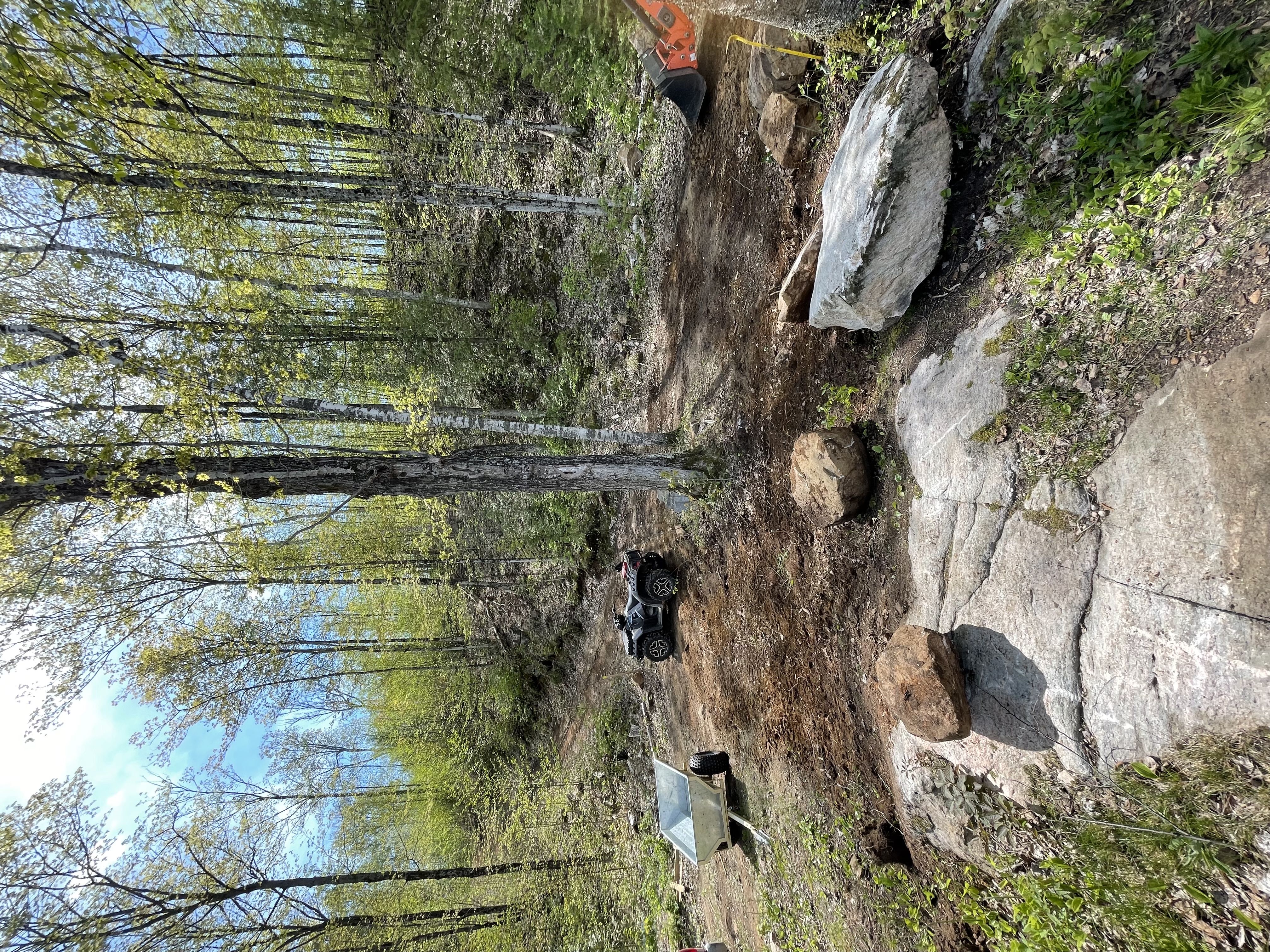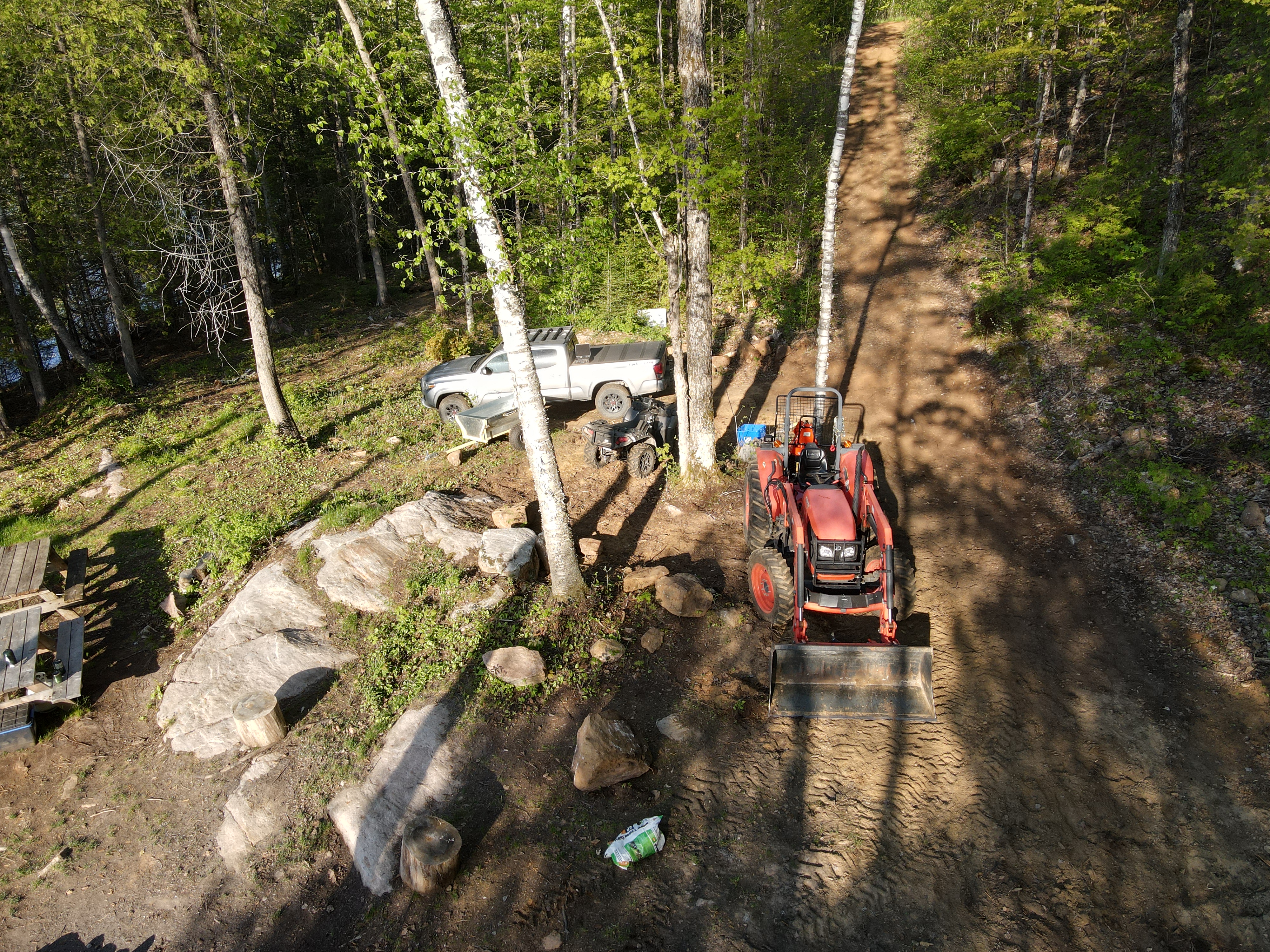Big Toy
I can’t remember exactly when I decided I needed a tractor. I think I’d half-joked about it, maybe gauging friend’s reactions. I can say, however, that I understood effectively nothing remotely to do with machinery. I knew I needed help with:
- collecting firewood
- clearing the road in winter
- lifting things I can’t lift
That’s about it. While an ATV, which I already have, can do some of these things, it’s not what it’s made for and it will be slow work that wears hard on the machine. So, let’s buy a tractor then. Fair warning, this post is heavy on Tractor Stuff.
Tractors
I knew nothing, and I mean absolutely nothing, about tractors or machinery in general. It’s not that they’re particularly complicated, in fact they’re somewhat famously simple in many ways (after all, maintenance and repairs are often performed in the field), but there is a lot to know outside of knowing the machine itself, and they are unlike road vehicles in that usually routine maintenance isn’t carried out at a mechanic shop or dealer, as that would mean a long, slow drive on the highway, or hundreds or thousands of dollars in freight. I had never even changed an engine’s oil, so this should go swimmingly.
Anyways, knowing too little has never stopped me from diving straight in, skipping several research steps.
I’m so sorry, I have to describe what a tractor is
Tractors are the original “naked robotic core”. They provide a place for an operator to sit, an engine, transmission, wheels, and hydraulic circuit. They also include a “3 point hitch,” 3 arms on the rear of the tractor that can grab various implements (attachments), and a PTO (“power take off”), that allows sending engine power through a shaft into implements, for example to spin a snow blower auger or a mower. They don’t even necessarily have a bucket on the front, that’s a “loader,” and it’s generally optional equipment. A tractor on its own can only move itself and pull something behind it—the name covers it, TRACtor, they’re build to provide traction for whatever job you give it.
Tractors are given abilities using implements, including the loader. The main variables when choosing a tractor are size, power (usually proportional to size), open/closed station (whether it has an enclosed cab or not), 2wd/4wd, and hydraulic system implementation details. There are plenty more attributes, but this is called Cabin in the Woods, not Wow Tractors I Love Tractors.
There, that wasn’t painful, right?
So what am I looking for?
I started out looking at new machines, primarily Kubota. One valuable piece of advice I’d received was to buy a machine that had local dealers so that repairs and parts would be accessible. The other reason I was looking at Kubota was that they’re well known for compact tractors.
A friend had suggested that if I plan to be in the forest a lot, which I do, I should go for an “open station,” meaning no cab, no weather cover, no heat/AC. No cab means nothing to damage scraping trees and branches, the ability to reach “into” the cab from either side to adjust controls, and the possibility of freezing to death when clearing snow (but it’s spring, snow is like, so far away I might as well ignore it).
I imagined not a tiny tractor, but what I considered a medium-compact size. Something that looks like it can actually pull a log, but really, how much tractor does a non-farmer need? Well, as it turns out, the same friend that suggested I freeze to death in winter get an open station machine was insistent that the 26-40hp tractors I was looking at would be regretted purchases. Better to have too much than too little, it seems.
The one
I think I’ve mentioned before that I buy a lot of things used. If not, well, I do that. The driven-off-the-lot discount is too good to pass up as long as the product doesn’t look abused. Though the LX2610 pictured above was me looking at new machines, I quickly reverted to buying used when it became clear I was to buy a larger machine.
I looked at small handful of 55+HP units (my directive was basically “no such thing as too much tractor”) including an AgCo and a Mahindra, but finally had a close look at a Kubota M7040SU (sometimes called M7040SUHD, I’m not sure why). As with a lot of machinery, the power is in the model number - 70HP. The SU is apparently Special Utility and the HD is… Hydraulic Shuttle? For some reason? The dealer told me the SU meant it was equipped with slightly fewer “comfort” options, but the only example they could provide was that it lacked rubber floor mats. In a tractor. An open station tractor. Works for me. The most “comfort” option this tractor has is that the seat flips up against the steering wheel so rain water doesn’t pool on it (really a pretty valuable feature, to be honest).
I won’t drag you through every detail of the machine, but the basics are:
- 70HP diesel 4 cylinder, 4WD
- 1,070 hours (2015 year model)
- 8 forward/8 reverse gears through a hydraulic shuttle transmission
- loader with approx. 2,500lb max capacity
- 3 point hitch and ~62hp PTO
- “loaded” rear tires and double wheel weights
- it’s orange
I took it for a test drive in the lot, but it took a while to get the basics of operation down. I’ve heard it said that a new type of machine commonly takes around 50 hours to gain proficiency with, and that seems about right to me. The net new concept to me was the hydraulic shuttle transmission. The tractor has a clutch, and you can change gears while in motion, but the clutch is not needed for switching between forward, neutral, and reverse. I think you have to try it (or watch some youtube) to understand it. Forget I said anything.
Loaded tires are tires half-2/3 filled with a fluid to add weight to the machine, in this case at the rear. This is helpful because if you are carrying a lot of weight with the loader, your rear end will lose traction. The fluid has to have a low freezing point in colder climates for obvious reasons, and the common choices are a calcium additive or beet juice. I’m not sure which I have, and I hope to never need to find out, because these tires are almost as tall as I am. The rear wheels also have weights bolted to them, two large pieces of iron each at probably 150-225lb per wheel.
4WD is also relevant to heavy loader usage. When your rear end is getting a little light, you’ll still have drive on the front wheels. This is (at least in part) why pickup trucks, vans, busses, etc. are RWD: it is expected that most of the payload will be over the rear wheels, and will assist traction.
Something I was pleased to learn during purchase: zero-rated farm equipment in Canada.
Farmers typically do not collect tax on their sales, but they still pay the GST/HST on their taxable purchases. In recognition of potential cash flow problems, certain agricultural equipment is specifically identified as being zero-rated. The list of selected agricultural equipment is generally limited to major equipment of a type purchased exclusively by farmers.
In short, tractors with a PTO rated at 60HP or above (62, here, not to brag) are zero-rated and are taxed at 0%. This was pure luck, and I would have adjusted my search to this threshold had I known beforehand. Anyways, if anyone asks, I’m a farmer.
Finally, machine hours. Cars and trucks are, I think, the only types of vehicles that primarily describe their usage in mileage (kilometre-age?), because most of the time they’re in use, they’re in transit. Tractors are often moving while they are in use, but often very slowly and sometimes not at all, and in either case can be working pretty hard all along. I am not a mechanic by any stretch of the imagination, but with enough exposure, I think you get a sense of how to convert hours to how “used up” the machine is, along with visual indicators. Learning what to listen for in various areas (engine, hydraulics, bearings, pins and bushings) also comes with time. All of that said, a thousand hours is basically new as long as service intervals have been followed, and it would take significant abuse and neglect to significantly harm a machine by that point.
Delivery
I mentioned there’s more to know about heavy machinery than the machine itself. Well, I drive a Tacoma with a max tow of about 6,300lb. This tractor, with its loader and fluid-filled tires, weighs in the ballpark of 8,500lb. Even if a trailer weighed nothing, I wouldn’t be able to tow this tractor. The dealer was 2.5 hours from the lake. I took the dealer’s recommendation on a local transport and booked delivery.
Now, I’ve mentioned that the road I’m on is winding, narrow, steep in places, and maintained (barely) by the handful of property owners on it. This delivery was the second I’d ever planned, after the shipping container, and I was very careful to confirm the type of transport it would be arriving on. Given it was a heavy duty pickup and a long gooseneck trailer, I told the driver specifically where to drive to and wait for me, a part of the wider, more forgiving, municipally maintained road leading to mine.
This would be the first of many (oh so many) times my careful words were ignored. The driver called when he was half way down the 1.4km of private road, 700m past the point I told him to wait at due to known hazards, bottomed out on a crest in the road (one of several). I didn’t even tell him I was down that road, I don’t know where he was going.
I was not prepared for this, and it took at least two hours and a few damaged trees to negotiate with the driver how to proceed, get my tractor unloaded, and get him and his 35+ foot trailer back out. I didn’t even know how to properly operate my machine yet. The driver was clearly angry with me for the situation he found himself in and for the scratches and scrapes his trailer experienced, and it took everything I had not to throw it back in his face. Had he stopped where I told him to, it would have been a simple job and he’d have been home for dinner. Oh how I wish this were the worst instance of this I’d experience.
Implements
As I’ve mentioned, a tractor is an engine for whatever you attach to it. But I’ve gone on long enough, I’m going to make this a two-parter.
Almost forgot
It sucks when people don’t talk money at all. The machine was about CA$39,000 in spring 2021, and it was about $800 to freight it 2.5-3h away.
